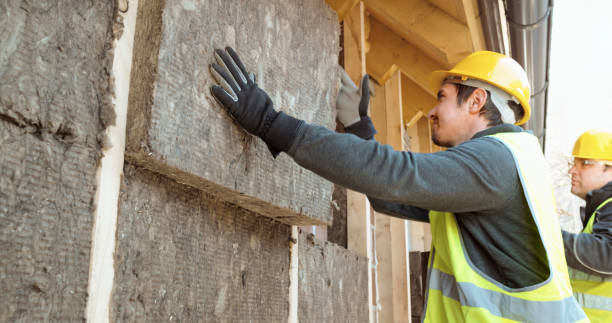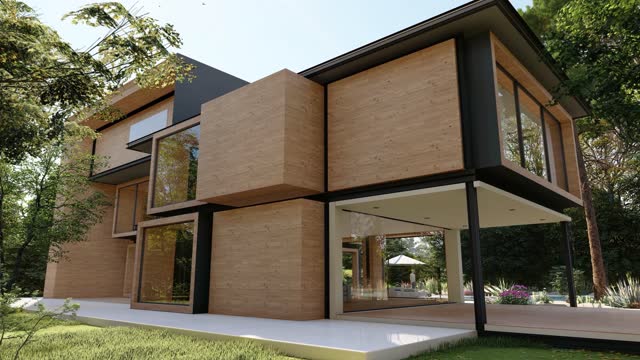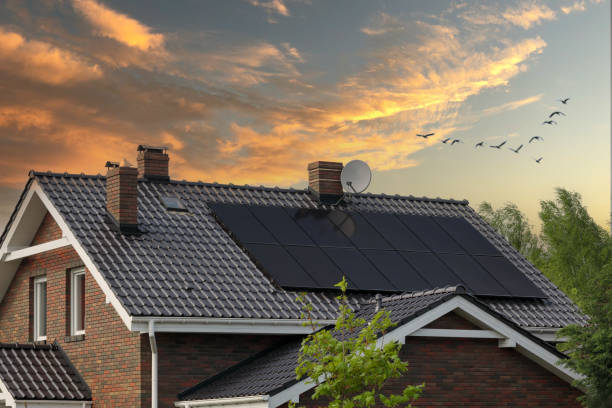Sustainable Building Materials: Green Choices for Construction and Renovation
This post contains affiliate links. This means I will make a commission at no extra cost to you should you click through and make a purchase. Read the full disclosure here.
In recent years, there has been a growing interest in sustainable building practices that prioritize environmental responsibility. As a result, the use of sustainable building materials has gained significant attention in the construction and renovation industry. This article will explore the importance of sustainable building materials, discuss different types of materials available, highlight their benefits, showcase popular choices, address challenges and considerations, and ultimately provide insights for making green choices in construction and renovation projects.
Table of Contents
Introduction
Building and renovating structures have traditionally involved the use of materials that have a negative impact on the environment, such as concrete, steel, and non-renewable resources. However, with the rising awareness of environmental issues, the construction industry has begun shifting towards sustainable practices. Sustainable building materials offer an alternative approach that reduces the ecological footprint of construction and promotes long-term environmental stewardship.
The Importance of Sustainable Building Materials

Using sustainable building materials is crucial for minimizing the negative impact of construction and renovation on the environment. These materials are designed to conserve resources, reduce waste, and lower energy consumption. By choosing sustainable options, builders and homeowners can significantly contribute to preserving natural resources, reducing greenhouse gas emissions, and promoting a healthier living environment.
Types of Sustainable Building Materials
Recycled Materials
Recycled materials are an essential component of sustainable building practices. These materials are derived from waste products or byproducts of other manufacturing processes. Examples include recycled steel, reclaimed wood, and recycled glass. By using recycled materials, construction projects can reduce the demand for virgin resources and divert waste from landfills.
Renewable Materials
Renewable materials are derived from rapidly replenishing sources, such as bamboo, cork, and hemp. These materials offer a sustainable alternative to traditional building materials as they can be harvested without depleting the natural ecosystem. Additionally, renewable materials often have excellent insulation properties and can contribute to energy efficiency.
Low-Impact Materials
Low-impact materials are chosen for their minimal environmental footprint. These materials focus on reducing energy consumption and pollution during the production, use, and disposal phases. Examples of low-impact materials include rammed earth, earth and straw, and natural clay plasters.
Benefits of Using Sustainable Building Materials

Using sustainable building materials provides a range of benefits, including:
Environmental Benefits
Sustainable materials help conserve natural resources, minimize waste generation, and reduce greenhouse gas emissions. By choosing eco-friendly options, builders can contribute to biodiversity conservation and protect ecosystems.
Energy Efficiency
Many sustainable building materials offer superior insulation properties, reducing the need for excessive heating or cooling. This leads to lower energy consumption and decreased utility bills.
Health Benefits
Sustainable building materials are often free from harmful chemicals and pollutants, ensuring a healthier indoor environment. These materials promote better indoor air quality and minimize the risk of respiratory problems or allergies.
Popular Sustainable Building Materials
- Bamboo: Known for its rapid growth and durability, bamboo is a versatile material used for flooring, furniture, and structural elements.
- Cork: Harvested from the bark of cork oak trees, cork is a renewable material that provides excellent insulation and soundproofing properties.
- Reclaimed Wood: Salvaged from old buildings or structures, reclaimed wood adds character and reduces the demand for new timber.
- Recycled Steel: Steel made from recycled materials has a significantly lower carbon footprint than virgin steel and is often used for structural components.
- Earth and Straw: This mixture of earth and straw offers a natural and sustainable alternative for constructing walls and insulation.
- Hempcrete: Made from the inner core of the hemp plant combined with lime, hempcrete provides excellent thermal insulation and has a low carbon footprint.
- Rammed Earth: This ancient building technique involves compressing a mixture of earth, sand, and clay into solid walls, providing excellent thermal mass properties.
- Solar Panels: Solar panels harness renewable energy from the sun, reducing reliance on traditional energy sources and lowering carbon emissions.
Challenges and Considerations
While sustainable building materials offer numerous advantages, there are certain challenges and considerations to keep in mind:
Availability and Sourcing
Some sustainable materials may not be readily available in all regions, which can limit their use. Additionally, sourcing these materials may require careful consideration to ensure they meet quality and environmental standards.
Cost Considerations
Sustainable building materials can sometimes be more expensive than traditional options due to factors such as limited availability or specialized manufacturing processes. However, it’s important to consider long-term savings, energy efficiency benefits, and the potential for increased property value.
Durability and Longevity
Not all sustainable materials may possess the same level of durability as traditional materials. Builders and homeowners must carefully evaluate the lifespan and maintenance requirements of sustainable options to ensure their longevity.
Maintenance and Upkeep
Some sustainable materials may require specific maintenance practices or regular upkeep to retain their integrity and performance. It’s crucial to factor in these requirements during the planning and construction phases.
Final Thoughts
In a world where environmental sustainability is a growing concern, opting for sustainable building materials is a responsible and forward-thinking choice. By embracing materials that are recycled, renewable, and have a low environmental impact, we can contribute to the conservation of resources, energy efficiency, and healthier living environments. While challenges exist, the benefits of using sustainable materials outweigh the drawbacks, making them an integral part of a greener construction and renovation industry.
FAQs
Are sustainable building materials more expensive than traditional options?
Sustainable building materials can sometimes have a higher upfront cost due to various factors, but they often provide long-term savings through energy efficiency and increased property value.
Can sustainable building materials be used in all regions?
Availability may vary depending on the region. While some sustainable materials may be more accessible in certain areas, efforts are being made to expand their availability and promote local sourcing.
Do sustainable building materials require special maintenance?
Some sustainable materials may have specific maintenance requirements to ensure their longevity and performance. It’s important to consider these factors during the planning and construction phases.
Are sustainable building materials as durable as traditional materials?
The durability of sustainable materials can vary. It’s crucial to assess the lifespan and maintenance needs of specific materials to ensure their suitability for the intended application.
Do sustainable building materials contribute to energy efficiency?
Yes, many sustainable building materials offer excellent insulation properties, reducing the need for excessive heating or cooling and promoting energy efficiency.














